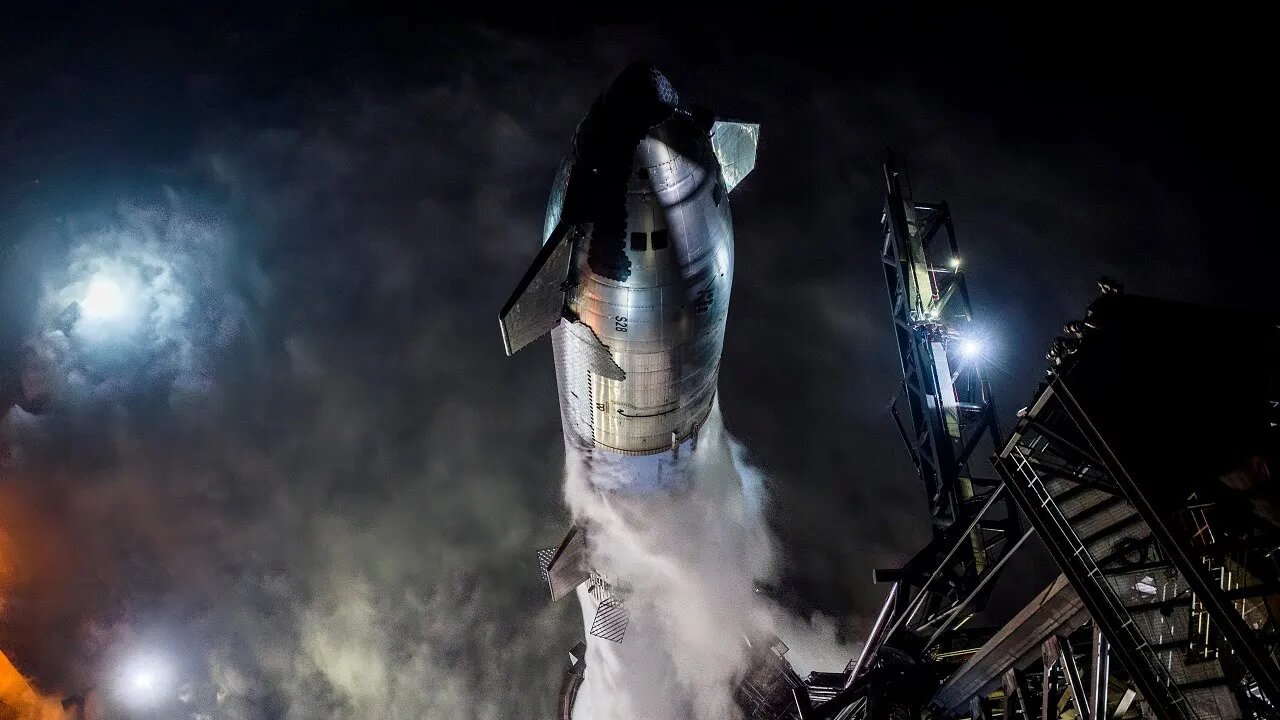Premium Only Content

SpaceX Reveals What Happened At Starship Launch
SpaceX Reveals What Exactly Happened At Starship Launch! The launch day for SpaceX's Starship began with the team at Starbase conducting final systems checks and assessing the weather. Initially, there were concerns about wind speeds, but conditions improved, allowing the launch sequence to proceed as planned.
Several hours before the scheduled liftoff, the fueling process commenced. As the clock counted down to T-60 minutes, teams conducted final weather checks, ensuring conditions were favorable. Given the green light, the launch director initiated the propellant load.
By T-45 minutes, the Starship and its Super Heavy booster were being fueled with liquid methane and liquid oxygen, a meticulous process watched closely by engineers and space enthusiasts alike.
As the countdown reached T-10 minutes, final system checks were completed. The launch control team verified that all technical and safety parameters were met. Just before the engines' ignition, the water deluge system was activated, unleashing approximately 350,000 gallons of water at the base of the Starship. This massive outpouring served a dual purpose: it was designed to absorb the immense heat generated by the rocket's engines and to mitigate the acoustic shock that could damage the spacecraft, the launch pad, and surrounding infrastructure.
By flooding the area with water, it created a barrier and cooling effect that significantly reduced thermal and acoustic stress. This system's effectiveness was evident as the Starship ascended into the sky; the launch pad and its immediate vicinity remained intact, free from visible damage.
At T-0, the activation of the Raptor engines on the Super Heavy booster generated an immense 16 million pounds of thrust, propelling the Starship and its booster off the ground. This level of thrust is about twice that of the Saturn 5 rocket, which historically has been one of the most powerful rockets ever built for the Apollo moon missions.
At T+1 minute into the flight, the vehicle reached the point of maximum aerodynamic pressure, known as Max Q. This critical phase occurs as the spacecraft ascends through the atmosphere at increasing speed, resulting in the highest aerodynamic stress on its structure. Successfully navigating through Max Q is crucial, as it tests the vehicle's design and integrity under the most extreme atmospheric flight conditions.
By T+2 minutes and 50 seconds, a pivotal moment in the launch sequence occurred: the hot stage separation. This maneuver involved igniting the Starship's engines before separation, a technique that simplified the process and enhanced efficiency.
During the first starship launch, traditional stage separation was used, where the lower stage would shut down before detaching from the upper stage. This old method wasn't as efficient because it momentarily stopped pushing the rocket forward. This method resulted in a momentary loss of thrust and efficiency during the critical phase of ascent.
Hot staging fixes this by starting the engines on the upper stage of the Starship before it separates from the lower booster stage. This method keeps the rocket moving forward without losing any push, making the launch more efficient. It’s like keeping your foot on the gas pedal while shifting gears in a car, so you don’t lose speed. This approach isn’t entirely new and has been used in Russian rockets, but it was a big step for SpaceX to include it in their system. It required adding special vents and shields to the booster to handle the heat and pressure from the engines firing so close together.
-
 LIVE
LIVE
SpartakusLIVE
4 hours agoEXPLOSIVE $400+ 2v2 Tuesday has viewers GLUED to the screen
399 watching -

GrimmHollywood
3 hours ago🔴LIVE • GRIMM'S TUESDAY FRIGHT NIGHT • STARRING GRIMM HOLLYWOOD • NO, I'M NOT HUMAN PART 1 •
6.23K1 -
 1:21:01
1:21:01
Flyover Conservatives
10 hours agoAI Encouraged Suicide: The Global Experiment on Our Kids - Joe Allen | FOC Show
16.1K3 -
 1:07:40
1:07:40
Glenn Greenwald
5 hours agoTucker Carlson on Charlie Kirk Assassination Fallout, Free Speech, Foreign Policy, and the Reaction to his Kirk Remarks | SYSTEM UPDATE #520
149K106 -
 14:22
14:22
Robbi On The Record
2 days ago $0.64 earnedGen Z’s Narcissism Obsession: Why Everyone’s a “Psychologist”
19K9 -
 LIVE
LIVE
GritsGG
6 hours agoQuad Win Streaks!🫡 Most Wins in WORLD! 3600+
295 watching -
 1:09:28
1:09:28
Sarah Westall
3 hours agoCan the World Be This Strange? The Nature of Our Reality w/ Darius J Wright
20.7K1 -
 1:58:20
1:58:20
megimu32
4 hours agoOn The Subject: Friends | 31 Years of the Sitcom That Defined a Generation
27.1K4 -
 30:00
30:00
BEK TV
1 day agoCounter Culture Mom
5.04K -
 1:24:54
1:24:54
Kim Iversen
7 hours agoTylenol vs Vaccines: Which One Is The REAL Cause Of Autism? The Truth Will Upset You
58.4K67